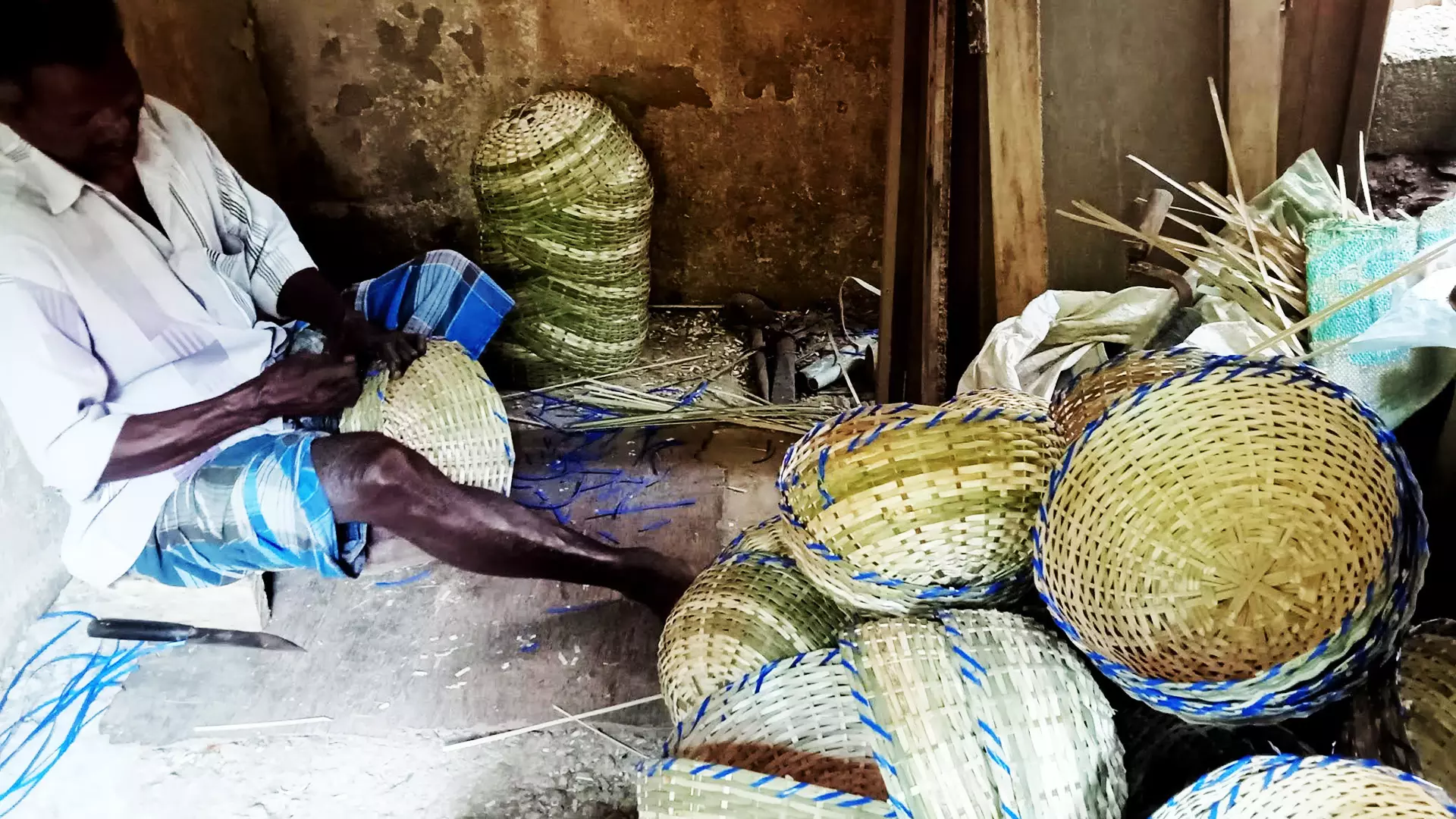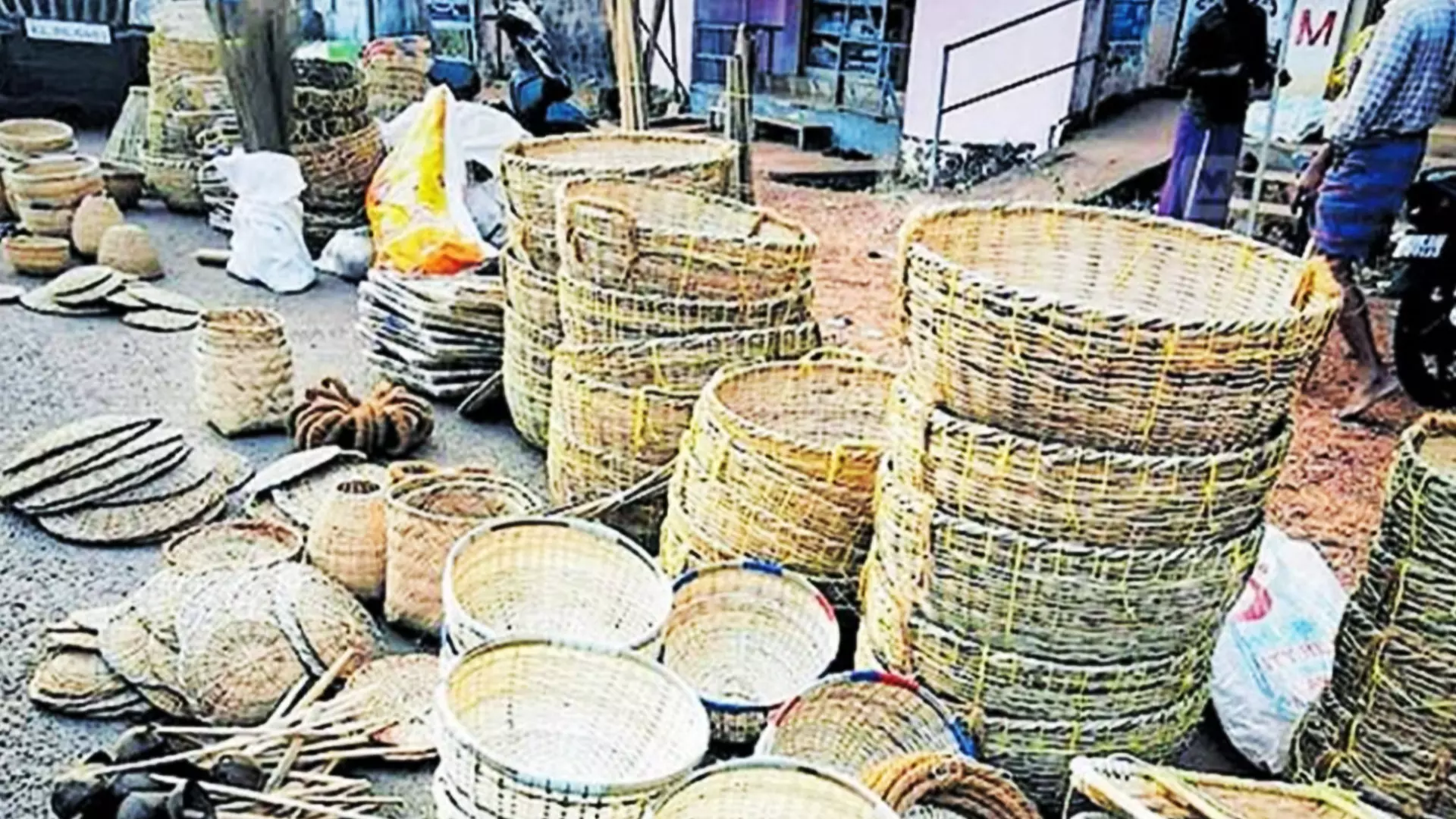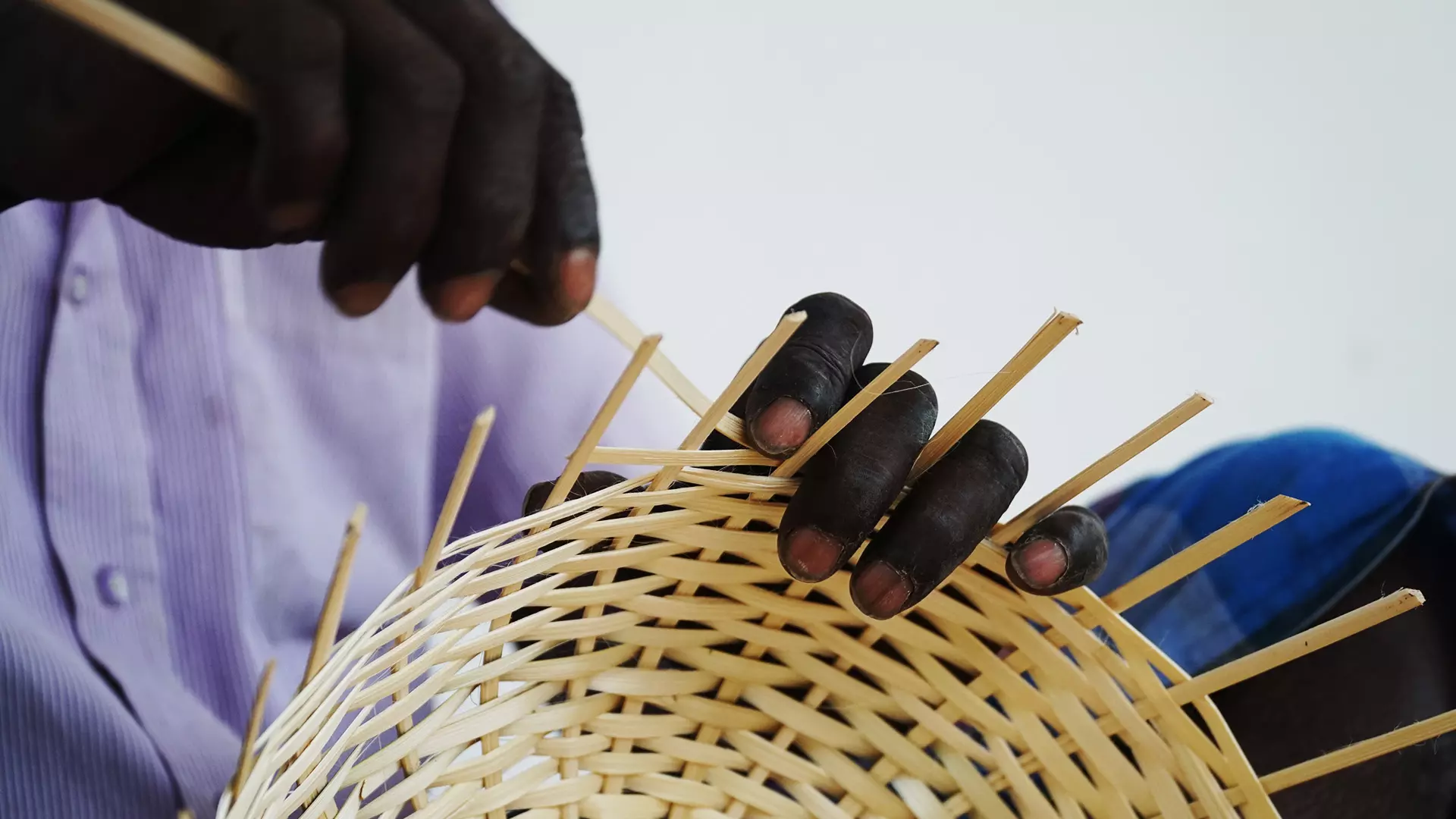
- Home
- India
- World
- Premium
- THE FEDERAL SPECIAL
- Analysis
- States
- Perspective
- Videos
- Sports
- Education
- Entertainment
- Elections
- Features
- Health
- Business
- Series
- In memoriam: Sheikh Mujibur Rahman
- Bishnoi's Men
- NEET TANGLE
- Economy Series
- Earth Day
- Kashmir’s Frozen Turbulence
- India@75
- The legend of Ramjanmabhoomi
- Liberalisation@30
- How to tame a dragon
- Celebrating biodiversity
- Farm Matters
- 50 days of solitude
- Bringing Migrants Home
- Budget 2020
- Jharkhand Votes
- The Federal Investigates
- The Federal Impact
- Vanishing Sand
- Gandhi @ 150
- Andhra Today
- Field report
- Operation Gulmarg
- Pandemic @1 Mn in India
- The Federal Year-End
- The Zero Year
- Science
- Brand studio
- Newsletter
- Elections 2024
- Events
From bamboo to basket: How a weaver turned out to be a researcher while saving a dying handicraft

As a plant material, bamboo had a significant influence on early civilisation and human culture. Scholars like Geoffrey Pope believe that the early inhabitants made tools and artefacts using bamboo much before they used materials like stone and iron. If you look at the history of India, you will see that the tradition of weaving baskets, artefacts and other materials using bamboo existed...
As a plant material, bamboo had a significant influence on early civilisation and human culture. Scholars like Geoffrey Pope believe that the early inhabitants made tools and artefacts using bamboo much before they used materials like stone and iron. If you look at the history of India, you will see that the tradition of weaving baskets, artefacts and other materials using bamboo existed among various communities across the country from time immemorial. As plastic overtook bamboo in today’s highly urbanised world, we have lost a rich tradition of bamboo weaving. However, members of some communities still continue the job, thanks to the support given to them by some government and social organisations.
As a natural “resource”, how does bamboo transform into a “material” for weaving baskets? To find the answer to this question, Madhu Narayanan started a journey in search of the history behind the making of baskets and other materials using bamboo. Madhu, who belongs to the community of traditional basket weavers in Kottarakkara in the Kollam district of Kerala, wanted to study in detail the history behind the art of weaving. It was in the early 1990s when Madhu was helping his parents in weaving baskets that he got a chance to attend a workshop conducted by an expert from New Delhi. The workshop helped him learn new techniques, and he realised the potential in bamboo-weaving.

Bamboo-weaving in process.
To learn more about the methodology, Madhu joined the University of Madras in 2002 to pursue MA (Anthropology). In 2004, he passed out with a gold medal from the university. It was after acquiring the basic academic knowledge that Madhu joined the IIT, Madras for his research on the social and cultural aspects of bamboo weaving.
“Although making a basket is an explicit action, artisanal skill that involves design and manual labour, the knowledge application behind the material process is less discussed in the historiography of technology,” says Madhu, a research scholar at the Department of Humanities and Social Sciences, IIT, Madras. Madhu’s recent study unveils how material processing techniques are relevant in understanding the materiality and history of a craft as everyday technology. He shares his experience in India as well as abroad while doing research on the social and cultural history of basketry using bamboo as a plant material.
“There are two ways of looking at a basket made of bamboo. If you see only the basket, then you miss the link. The basket is a material, but there is a long process behind it, from collecting the bamboo to splitting to drying to weaving. What I am trying to do is to place the traditional weaving in the social and cultural (economic as well) contexts of today,” says Madhu, who plans to complete his thesis in a couple of months.
As a child, Madhu was familiar with the weaving techniques that his parents used for crafting bamboo baskets and mats. Seasoning and processing the material was challenging. Sourcing the reed, mostly from the forest, is the first step. Transporting the reed to the workshop is the second step. The reed needs to be cut and split, and finally, the fibre strips of different dimensions need to be pulled out. “It requires skill and accurate knowledge of the material and tools, honed to perfection through consistent practice. Although baskets and mats are the broader categories of objects, each of these encompasses quite a few varieties, and each has its own local name such as “Kutta”, “Vatti”, “Muram”, “Arrivala”, “Mundupetti”, or “Paaya”. All these objects used to have specific functions in the daily lives of the people in this region until the end of the 20th century,” writes Madhu in “Following ‘Fibreality’: What does the making of bamboo baskets tell us?” published in ICON: Journal of the International Committee for the History of Technology.

Baskets and other bamboo articles being sold in market.
He said Kanikkar and Sambavar (Parayar) are the two prominent communities skilled in making these objects in the region, and many others have learned the techniques in the second half of the last century for their economic pursuits. In the Kollam district of Kerala, these bamboo baskets once used widely in the cashew factories, fishing centres and farm lands. “Kollam is a centre of cashew factories. Fishing was also very popular there. The bamboo baskets were used widely in the cashew factories and fishing harbours until the early 1990s when plastic overtook the traditional bamboo baskets. Many weavers who were contributing to the economy stopped weaving because there were no takers for their products,” he adds.
Bamboo, according to Madhu, is a fast growing plant which reaches its mature height in five years. The life span of most of the bamboo species is in the range of 40 years at the end of which they flower only once. Once flowered, the plant dies, shedding seeds (looks like wheat grains). The Nedumangad (20 km from Thiruvananthapuram) region of Kerala where Madhu did one of his field works is known for its bamboo products, made from a locally available bamboo called “Vey” or “Eeta” generally known as reed (Ochlandra Travancorica). The main characteristic of this species is that it has long fibre.
“Studies show that different varieties of bamboo have been part of human civilisation for a long time, and its use is still highly relevant to human societies. Although it is classified as a grass, bamboo often possesses the material characteristics of wood in its stems (culms), as it has been known as poor man’s timber,” says Madhu, who is working as a research assistant (anthropology) at the Directorate of KIRTADAS, Kozhikode.

Bamboo baskets were used widely in the cashew factories and fishing harbours until the early 1990s when plastic overtook the traditional bamboo baskets.
In 2022, Madhu joined the Max Planck Institute for History of Science in Berlin as a periodical visiting research fellow. As part of his research, he got a chance to visit the Museum of European Culture (MEK) where an international exhibition called ‘All Hands On: Basketry’ (2022-2026) was on. The exhibition focused on the complex weaving method that human beings mastered over time. “The exhibition focused on this fascinating skill, revealing the interconnections between historically evolved knowledge and modern innovations. There were a wide range of products from various places and watching them one after the other was a great experience. It was an eye-opener for me,” he says.
Fibres, according to Madhu, are among the materials that have influenced the economic, political and socio-cultural history around the world. “The wide range of objects made out of bamboo fibre has served human needs at various levels throughout history. We do not know exactly when and where these innovations to use bamboo fibre first took place. Making these objects involves the application of specific skills and practices. Knowledge makes it possible to adapt a plant and transform it into objects because makers can identify the substance of this material,” writes Madhu in the ICON journal.

Madhu Narayanan is in search of the history behind the making of baskets and other materials using bamboo.
Madhu says the bamboo basket-making community in South India holds a shared knowledge and assessment of the quality of bamboo as a material and the feasibility of turning it into objects. “The uniqueness of the fibre embedded within the bamboo plant is a decisive factor in making objects. The creative knowledge to identify ‘fibreality’ and extract the fibre, and process it as a material for making objects, is a human invention and innovation,” he adds.
